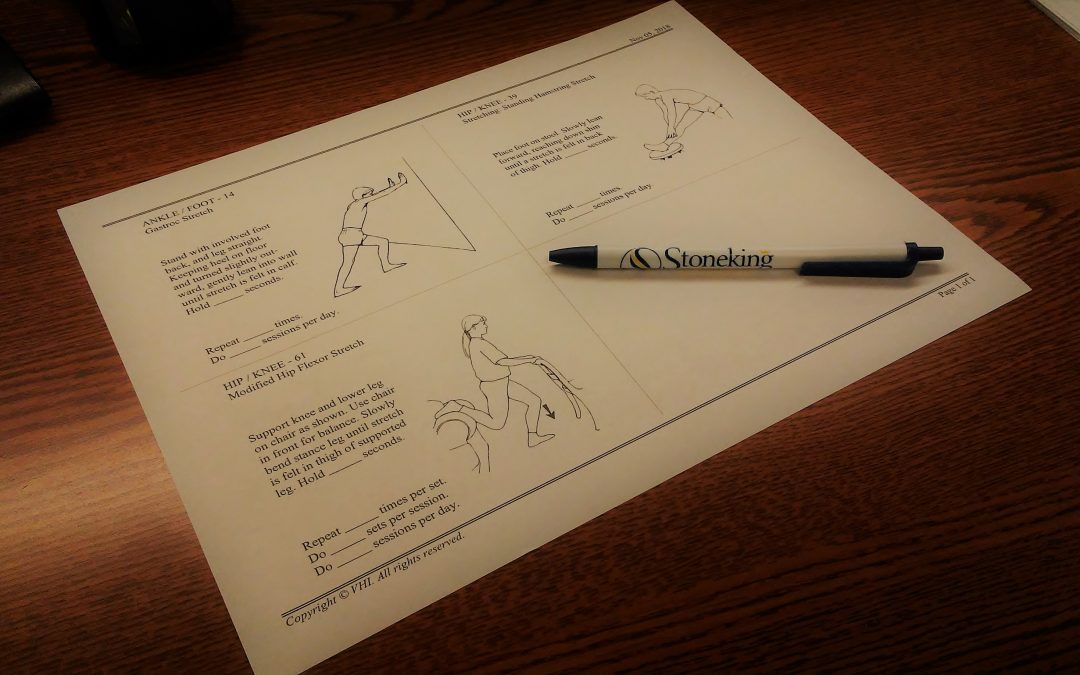Your home exercise program has been developed to provide you with the best possible independent exercise program to achieve your goals or maintain improvements obtained during your treatment. It is important that you perform the exercises prescribed by your therapist and that you be as consistent as possible with your program. The key to successful and lasting results is consistency of training.
Your therapist has completed a thorough musculoskeletal assessment and has selected specific exercises for your particular problem. By regularly performing the identified exercises or activities, your body will slowly begin to change in regards to flexibility, strength, balance and coordination. While many people are issued an independent home exercise program as their sole form of treatment, certain individuals may require more direct supervision and more precise control of the exercise than can be achieved at home. If you feel that your program is not helping you, please bring it to the attention of your physical therapist.
We are here to help you. If you experience any difficulties with your program or have any questions, please feel free to let your physical therapist know your concerns. There are also downloadable applications for your phone to assist with your home exercises. If that is something you are interested in, we’d be happy to provide recommendations to some of our favorites. Physical therapist prescribed home exercise programs play a vital role in your overall treatment plan and are very important to your success. Remember, exercise can be harmful if done incorrectly so don’t hesitate to reach out to your PT for further assistance.
Here are some definitions that may be helpful:
Repetitions: The performance of the exercise one time. For example, bending and straightening the elbow is one repetition.
Set: the performance of all prescribed repetitions at one time. For example, if the exercise needs 10 repetitions of bending the elbow, this would be one set. If instructions say three sets, this means do ten repetitions, rest, do another ten repetitions, rest, and then another ten repetitions.
Times/Day: The number of daily sessions that the repetitions and sets are to be performed.
Hold: This pertains mainly to stretches. It means how long you maintain the stretch or position. For example, if you are to stretch your arm over your head and hold 3 seconds, then you would keep your arm over your head for 3 seconds.

